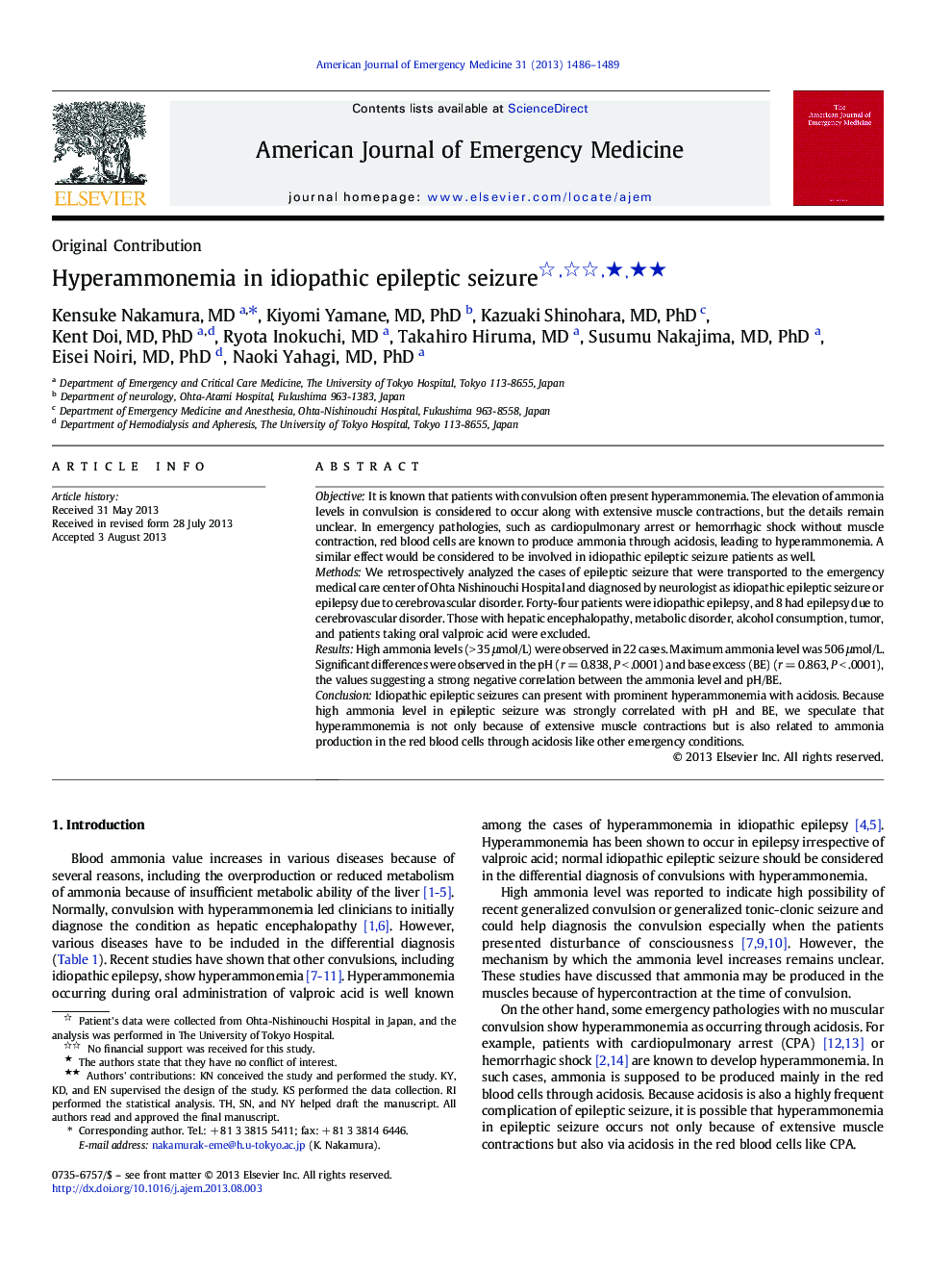| Article ID | Journal | Published Year | Pages | File Type |
|---|---|---|---|---|
| 3224453 | The American Journal of Emergency Medicine | 2013 | 4 Pages |
ObjectiveIt is known that patients with convulsion often present hyperammonemia. The elevation of ammonia levels in convulsion is considered to occur along with extensive muscle contractions, but the details remain unclear. In emergency pathologies, such as cardiopulmonary arrest or hemorrhagic shock without muscle contraction, red blood cells are known to produce ammonia through acidosis, leading to hyperammonemia. A similar effect would be considered to be involved in idiopathic epileptic seizure patients as well.MethodsWe retrospectively analyzed the cases of epileptic seizure that were transported to the emergency medical care center of Ohta Nishinouchi Hospital and diagnosed by neurologist as idiopathic epileptic seizure or epilepsy due to cerebrovascular disorder. Forty-four patients were idiopathic epilepsy, and 8 had epilepsy due to cerebrovascular disorder. Those with hepatic encephalopathy, metabolic disorder, alcohol consumption, tumor, and patients taking oral valproic acid were excluded.ResultsHigh ammonia levels (> 35 μmol/L) were observed in 22 cases. Maximum ammonia level was 506 μmol/L. Significant differences were observed in the pH (r = 0.838, P < .0001) and base excess (BE) (r = 0.863, P < .0001), the values suggesting a strong negative correlation between the ammonia level and pH/BE.ConclusionIdiopathic epileptic seizures can present with prominent hyperammonemia with acidosis. Because high ammonia level in epileptic seizure was strongly correlated with pH and BE, we speculate that hyperammonemia is not only because of extensive muscle contractions but is also related to ammonia production in the red blood cells through acidosis like other emergency conditions.
